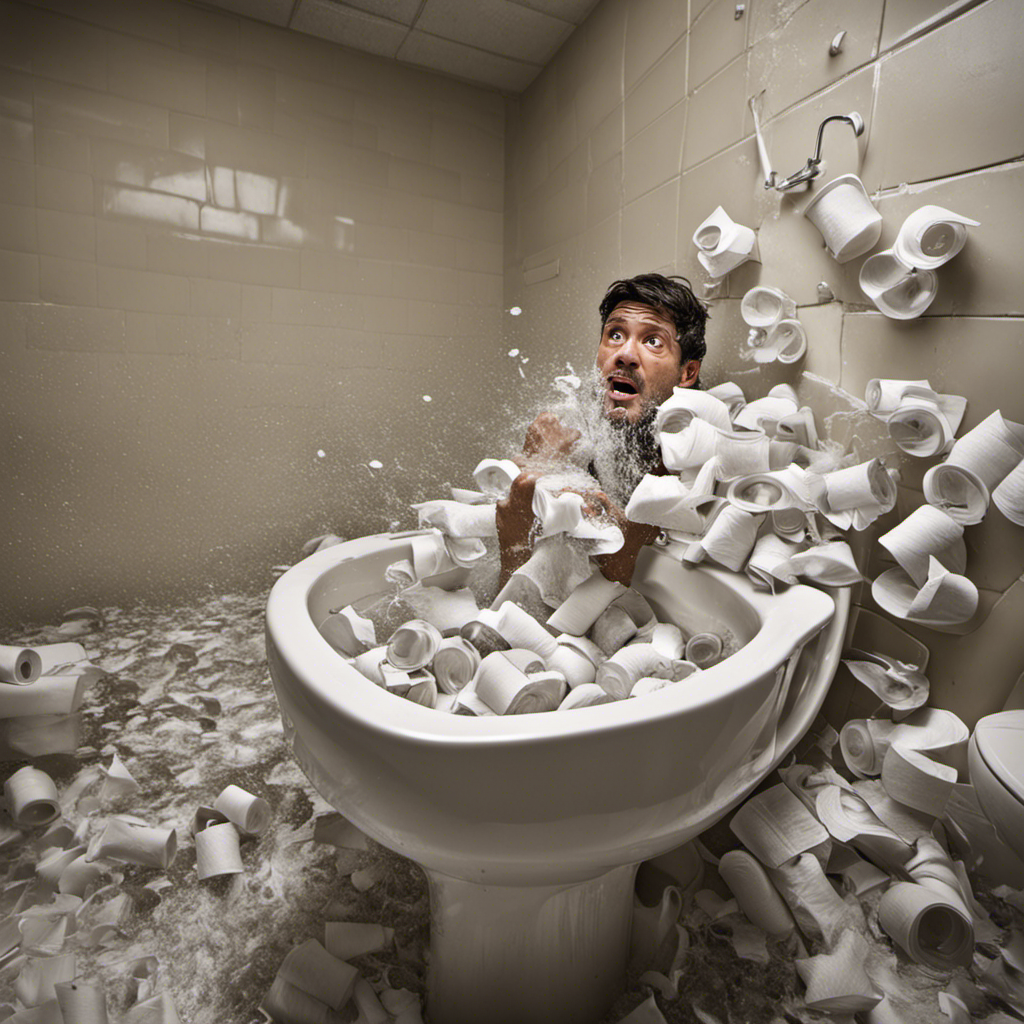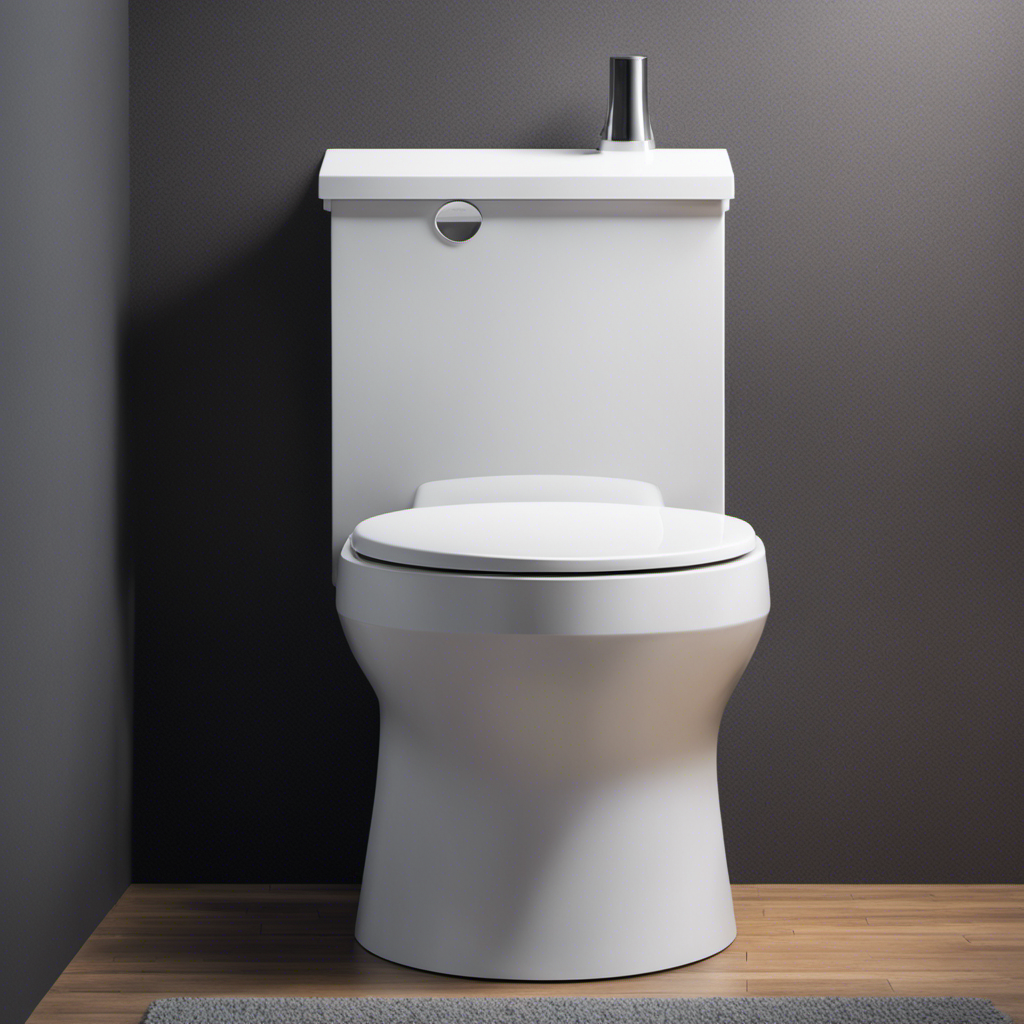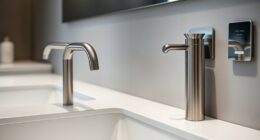As a seasoned plumber, I’ve encountered countless clogged toilets throughout my career. Today, I’m here to share my expertise and guide you through the process of unclogging a toilet.
From common causes to step-by-step instructions, I’ll equip you with the knowledge and tools needed to tackle this pesky problem.
So, if you’re currently struggling with a clogged toilet, fear not! With a few simple steps, you’ll have your bathroom back to its pristine state in no time.
Let’s dive in and discover what to do when faced with a clogged toilet.
Key Takeaways
- Flushing excessive amounts of toilet paper can cause toilet clogs.
- Avoid using items that do not easily dissolve, such as feminine hygiene products or paper towels.
- Do not flush non-flushable items like cotton balls or dental floss.
- Tools and supplies needed for unclogging a toilet include a plunger, bucket of warm water, drain snake or plumbing auger, chemical drain cleaner (if necessary), and protective gloves.
Common Causes of Toilet Clogs
One of the most common causes of toilet clogs is flushing excessive amounts of toilet paper. While toilet paper is designed to dissolve in water, using too much can overwhelm the toilet’s drainage system.
To prevent toilet clogs, it’s important to practice proper toilet maintenance. This includes using a moderate amount of toilet paper and avoiding flushing items that do not easily dissolve, such as feminine hygiene products or paper towels. Additionally, using toilet bowl cleaners regularly can help prevent buildup and keep the pipes clear.
However, if you find yourself dealing with a clogged toilet, don’t worry! There are tools and supplies you’ll need to address the issue and get your toilet back to working order.
Tools and Supplies You’ll Need
To tackle this issue, you’ll need a plunger and a bucket of warm water to unclog the toilet.
A toilet plunger is a must-have tool for every household. It helps create suction and dislodge the clog by pushing and pulling the water in the toilet bowl. Make sure the plunger is completely submerged in water before starting the plunging motion.
If the plunger doesn’t work, you may need to use a drain snake, also known as a plumbing auger. This tool is designed to reach deeper into the toilet drain and break up stubborn clogs. It can be inserted and rotated to clear the blockage.
With these tools on hand, you’ll be prepared to tackle any clogged toilet and restore proper functionality.
Now, let’s move on to the step-by-step guide to unclogging a toilet.
Step-by-Step Guide to Unclogging a Toilet
Now, let’s get started with the step-by-step guide on how to unclog a toilet.
-
Assess the Situation: First, determine the severity of the clog. Is the water level high? Is it draining slowly or not at all? This will help you choose the appropriate unclogging technique.
-
Use a Plunger: If the water is still draining, try using a plunger. Position it over the drain hole and vigorously plunge up and down until the clog is cleared.
-
Try a Toilet Auger: If the plunger doesn’t work, use a toilet auger. Insert it into the drain hole and crank the handle to break up the clog.
-
Use a Chemical Drain Cleaner: If the clog persists, consider using a chemical drain cleaner. Follow the instructions carefully and be cautious of harmful fumes.
-
Call a Professional: If all else fails, it’s time to call a professional plumber who can use specialized tools to unclog the toilet effectively.
Preventing Future Toilet Clogs
If you want to avoid future clogs, regularly maintain your toilet by flushing only appropriate materials. Toilet maintenance is essential to keep your bathroom running smoothly.
One of the easiest DIY solutions is to make sure you only flush toilet paper and waste. Avoid flushing items like wipes, feminine hygiene products, or paper towels, as these can easily cause blockages.
Additionally, it’s important to check the water level in the tank regularly and adjust the float if necessary. If you notice slow draining or weak flushing, using a plunger can often solve the problem.
For more stubborn clogs, a toilet auger can be used to remove blockages further down the drain.
When to Call a Professional Plumber
When you’re experiencing persistent issues with your plumbing that you can’t resolve on your own, it may be time to call a professional plumber. Here are some signs of a serious clog that indicate the need for professional help:
- Multiple drains are clogged simultaneously
- Water backs up into other fixtures
- Foul odors are coming from your drains
- Strange gurgling noises are heard when using plumbing fixtures
- DIY remedies like plunging and drain cleaners are ineffective
Hiring a professional plumber can save you time, money, and frustration in the long run. While the cost of hiring a professional plumber may seem expensive upfront, it is often more cost-effective in the end. They have the expertise, tools, and experience to identify and resolve complex plumbing issues efficiently, saving you from potential damage and expensive repairs.
Don’t hesitate to call a professional plumber when facing persistent plumbing problems.
Frequently Asked Questions
How Do I Know if My Toilet Is Clogged?
If my toilet is clogged, there are a few signs to look out for, such as water not draining or rising when I flush. To prevent toilet clogs, I can avoid flushing non-flushable items.
Can I Use a Plunger to Unclog My Toilet?
Yes, you can use a plunger to unclog a toilet. It’s a common and effective method. Alternatively, you can try using a snake to unclog the toilet or pouring hot water to help loosen the clog.
What Should I Do if the Plunger Doesn’t Work?
If the plunger doesn’t work, don’t panic. There are alternative solutions you can try, like using a toilet auger or a homemade drain cleaner. If all else fails, it’s time to call for professional help.
Are There Any Home Remedies I Can Try to Unclog My Toilet?
Well, when it comes to unclogging a toilet, there are a few home remedies you can try. One option is using a toilet snake, while another is mixing vinegar and baking soda.
How Long Does It Usually Take to Unclog a Toilet?
Unclogging a toilet can take anywhere from a few minutes to an hour, depending on the severity of the clog. It’s important to address the issue promptly and consider preventive measures to avoid future toilet clogs.
Conclusion
Well, that was quite an adventure! I never thought I would be able to successfully unclog a toilet, but thanks to this step-by-step guide, I tackled the task like a pro.
Armed with my trusty plunger and a few other tools, I was able to conquer the clog and restore peace to my bathroom. I even learned some tips on how to prevent future clogs.
This guide saved me from the embarrassment of calling a plumber and turned me into a DIY hero. I feel like I could take on any clog now, even if it’s the size of a mountain!










